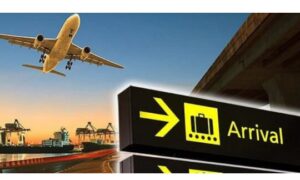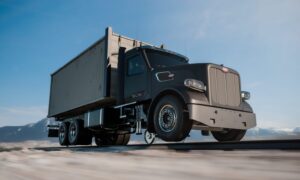Introduction
In recent years, the integration of drones into various industries has witnessed an unprecedented surge. While the popular narrative often revolves around their role in last-mile deliveries, the true potential of drones goes beyond the confines of packages and parcels. Aerial mobility solutions have emerged as a promising frontier, revolutionizing the transportation landscape. In this article, we delve into the diverse applications of drones in transportation, exploring how they are reshaping the way we move people and goods.
The Evolution of Drones in Transportation
Drones, or unmanned aerial vehicles (UAVs), were initially developed for military purposes. However, their agility, versatility, and cost-effectiveness quickly captured the attention of industries seeking innovative solutions to age-old challenges. In the realm of transportation, drones have evolved from being simple delivery mechanisms to sophisticated aerial mobility platforms.
Deliveries: A Gateway to Aerial Mobility
The widespread adoption of drones in the delivery sector paved the way for more ambitious applications. Companies like Amazon and UPS have experimented with drone deliveries, promising faster and more efficient services. As this technology matures, it acts as a stepping stone toward realizing the broader vision of aerial mobility.
Aerial Taxis: The Future of Urban Transportation
One of the most promising applications of drones in transportation is the concept of aerial taxis. Imagine a city where commuters bypass congested roads by taking to the skies in autonomous drone taxis. This futuristic vision is not as distant as it may seem. Companies like Uber, Airbus, and Volocopter are actively developing and testing prototypes of passenger drones.
The advantages are clear – reduced traffic congestion, faster commutes, and a potential shift towards more sustainable transportation. Aerial taxis have the potential to redefine urban mobility, providing a swift and eco-friendly alternative to traditional ground transportation.
Medical Transport: Drones Saving Lives
Beyond urban landscapes, drones are making a significant impact on healthcare. In remote or hard-to-reach areas, medical supplies often face challenges in reaching their destinations promptly. Drones offer a viable solution by providing a swift and efficient means of transporting medical essentials, including medications, vaccines, and even organs for transplant.
During emergencies, such as natural disasters or accidents, drones equipped with medical payloads can swiftly deliver life-saving supplies to affected areas. This capability has the potential to revolutionize disaster response and enhance the overall resilience of healthcare systems.
Infrastructure Inspection and Maintenance
Drones are also playing a crucial role in infrastructure inspection and maintenance. Traditional methods often involve manual labor, significant time, and sometimes pose risks to human workers. Drones equipped with advanced cameras and sensors can efficiently inspect bridges, power lines, and other critical infrastructure, providing high-resolution imagery and data for analysis.
Additionally, drones can be equipped with tools for minor repairs and maintenance tasks, reducing the need for costly and time-consuming manual interventions. This not only enhances the efficiency of infrastructure maintenance but also ensures the safety of workers.
Challenges and Considerations
While the potential of drones in transportation is vast, several challenges and considerations need to be addressed for widespread adoption. Regulatory frameworks, safety concerns, and public acceptance are key factors that will shape the future of aerial mobility. Striking a balance between innovation and regulation is essential to ensure the responsible and sustainable integration of drones into our daily lives.
Regulatory Frameworks:
Navigating the Skies
The rapid evolution of drone technology has outpaced regulatory frameworks, leading to a complex landscape that varies across regions. Establishing standardized regulations for aerial mobility is crucial to ensure safe and seamless integration into existing air traffic management systems. Governments and aviation authorities worldwide are actively working to develop comprehensive frameworks that balance innovation with safety.
Safety Concerns:
Building Trust in Aerial Mobility
Safety remains a paramount concern in the adoption of aerial mobility solutions. Ensuring the reliability of autonomous systems, developing fail-safe mechanisms, and conducting rigorous testing are essential steps to build trust among passengers and the public. Industry stakeholders must collaborate with regulators to establish industry-wide safety standards and protocols.
Public Acceptance:
Shaping Perceptions
The success of aerial mobility hinges on public acceptance. Overcoming the perception of drones as potential hazards requires proactive communication and education initiatives. Engaging with communities, addressing concerns, and showcasing the benefits of aerial mobility are integral to fostering a positive public perception.
Conclusion
Drones in transportation have transcended their initial role as delivery tools to become catalysts for a new era of mobility. From reshaping urban transportation with aerial taxis to saving lives through medical deliveries, drones are unlocking innovative solutions to age-old challenges. As the industry continues to evolve, collaboration between industry stakeholders, regulators, and the public will be essential to navigate the complexities and unlock the full potential of aerial mobility. The skies are no longer a limit but a realm of possibilities waiting to be explored.



































